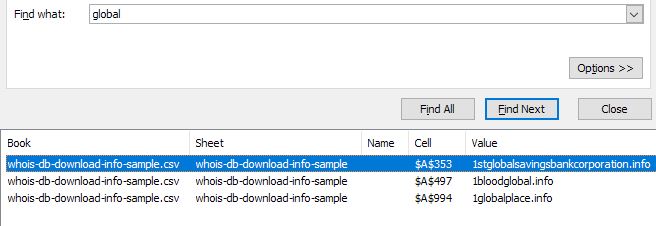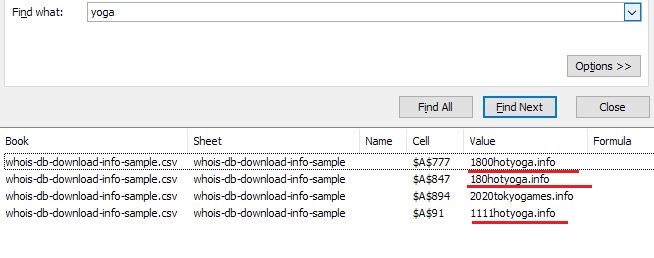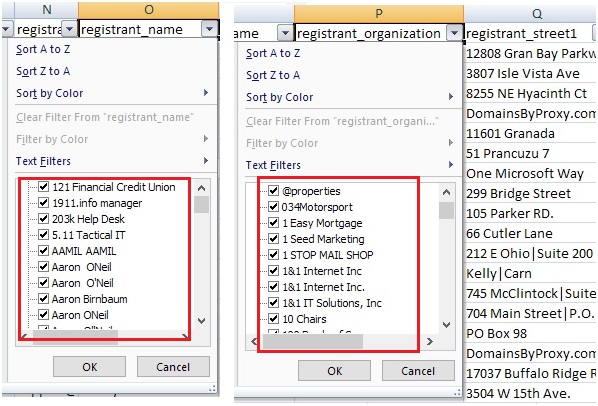The Role of WHOIS Data Download in Marketing

Marketing continues to evolve as consumer behaviors and industry standards are shifting. Notably, marketing activities that were once labor-intensive and time-consuming are now doable in one sitting.
In this post, we explore three of the marketing processes that technology made somewhat easier: brand protection, market monitoring, and competitor monitoring. These business processes are crucial elements of an overall marketing strategy. And sources of data such as a WHOIS data download can make such activities more effective and comprehensive.
3 Marketing Processes That a WHOIS Data Download Can Enhance
1. Brand Protection
Several people could make a living on another organization’s success. They imitate well-known brands and profit from cybersquatting or typosquatting. In the process, threat actors damage the company’s reputation since the lookalike domains mostly figure in malicious activities.
To illustrate how a WHOIS data download helps businesses protect their brands, let’s consider the case of First Global Bank (firstglobal-bank[.]com).
If its brand protection team filters the WHOIS database and searches for domains similar to its own, it would find 1stglobalsavingsbankcorporation[.]info.

A lookalike domain like this could be used in phishing emails directed to the bank’s clients. That said, the presence of such domains in the WHOIS database warrants in-depth investigation, making domain intelligence crucial for effective brand management.
Note that the result above is only from the sample database, which you can download here. There will surely be more similar domains for a search done on a complete database.
2. Market Monitoring
While market monitoring is an immense task, a WHOIS data download can make it more comprehensive by including domain intelligence. A web scraper would only turn up search results that include live websites. WHOIS data, in addition, can help reveal market trends as it covers domain registration events for websites that aren’t yet up and running, possibly because their owners are still potentially planning their next moves.
For example, a yoga center can see a possible trend toward hot yoga based on the sample WHOIS data download.

The yoga center can make a more informed decision concerning additional training and session offerings by obtaining statistics from a WHOIS data download. If the data shows a market trend, companies can immediately take action to stay ahead of what’s happening.
3. Competitor Monitoring
Gone are the days when companies needed to send a representative to a competitor’s store or office to get a glimpse of what the competition is doing. These days, competitor monitoring mostly occurs online, although WHOIS data download also gives organizations the opportunity to conduct it offline.
A WHOIS database can be customized to show only the domains owned by a specific registrant or organization. Thus, companies can track which domains belong to a competitor, allowing them to gain insight into what rivals could be planning.

Additionally, companies can filter a WHOIS database based on a registrant’s address. If a production company, for example, wants to know what other players in California are doing in terms of domain name registration, it can narrow the database down to that information.

Based on the filtered search results, two production companies based in the state—Kisma Productions and White Whale Productions—own the following domains with the .info top-level domain (TLD).
- 15thdimensionalhealing[.]info
- 1forallfor1[.]info
The production company conducting the competitor monitoring can then look at possible projects that the competitors are planning to venture into.
The illustrations above emphasize the role that a WHOIS data download can play in a company’s overall marketing strategy. Since the database is customizable and integrable into existing marketing systems, organizations can get a lot more insights.
Aside from these marketing processes, a WHOIS database can also be a potential threat hunting tool. For instance, by detecting potential cybersquatting domains, organizations can also gather possible indicators of compromise (IoCs). So aside from brand protection, they are able to enhance their cybercrime protection strategies.